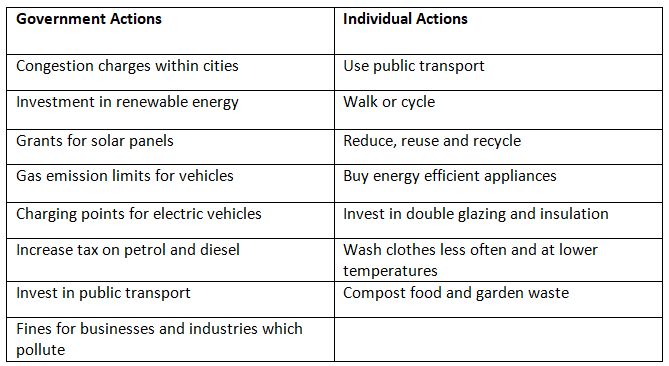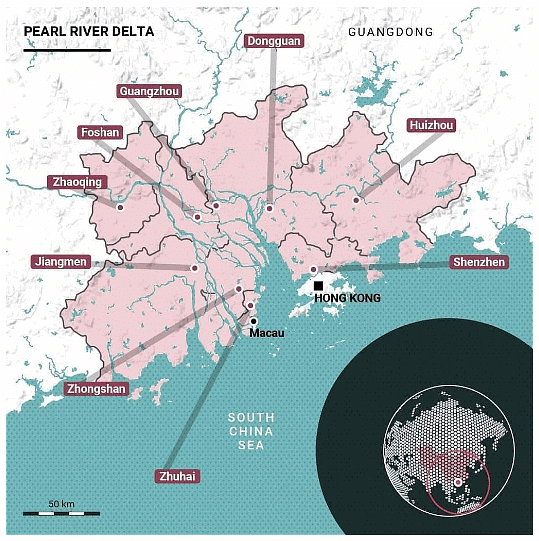Class 10 Exam > Class 10 Notes > Geography for GCSE/IGCSE > Resource Conservation
Resource Conservation | Geography for GCSE/IGCSE - Class 10 PDF Download
Conservation and Resource Protection
- Conservation involves safeguarding and utilizing natural resources wisely to ensure their availability for future generations.
- This includes various strategies aimed at efficiently managing resources to prolong their sustainability.
Ways to Protect the Environment
- Recycling and Reuse of Resources: Recycling and reusing items like clothing, glass, and plastics helps in reducing waste and conserving raw materials. For instance, old glass bottles can be melted down and reshaped into new ones, reducing the need for new glass production. Similarly, donating or repurposing old clothes reduces the demand for new clothing production.
- Efficient Energy Use: Utilizing energy-efficient appliances can significantly decrease energy consumption and water usage. For example, energy-efficient light bulbs consume less electricity and last longer than traditional ones, thus reducing overall energy demand.
- Protection of Natural Areas: Safeguarding national parks and Areas of Outstanding Natural Beauty is crucial for preserving biodiversity and ecosystems. These areas serve as habitats for various species and provide recreational opportunities for people. By protecting them, we ensure their sustainability for future generations.
- Investment in Renewable Energies: Increasing the use of renewable energy sources such as solar and wind power is essential for reducing greenhouse gas emissions and combating climate change. By investing in renewables, we can move towards a more sustainable and eco-friendly energy system.
- Sustainable Resource Management: Implementing quotas on resource usage helps prevent overexploitation of natural resources. By setting limits on fishing quotas, for instance, we can protect fish populations from depletion and maintain healthy marine ecosystems.
- Ecosystem Protection: Preserving specific ecosystems like Sites of Special Scientific Interest and abiding by agreements such as the Antarctica Treaty are crucial for conserving unique habitats and biodiversity. These measures ensure that delicate ecosystems remain undisturbed and functional.
- Combatting Deforestation: Reducing deforestation rates is vital for mitigating climate change, maintaining biodiversity, and protecting vital ecosystems. Afforestation and reforestation initiatives can help restore forest cover and offset carbon emissions.
- Enactment of Environmental Laws: Implementing laws to protect natural resources and sensitive areas is essential for holding individuals and organizations accountable for environmental damage. These laws serve as deterrents and ensure responsible environmental stewardship.
- Imposition of Fines: Levying fines on individuals, organizations, or companies that harm the environment acts as a deterrent and encourages compliance with environmental regulations. Fines serve as penalties for environmentally harmful actions and support conservation efforts.
- Resource Conservation Measures: Reducing resource consumption through strategies like rationing helps in minimizing waste production and promoting sustainable resource use. By using resources more efficiently, we can reduce our ecological footprint and preserve resources for the future.
Non-Governmental Organizations (NGOs) Working for Environmental Conservation
- World Wildlife Fund (WWF)
- Greenpeace
- Friends of the Earth
- Woodland Trust

Example Case Study: Pearl River Delta, China
- Located in South-East China, the Pearl River is the third longest river in China.
- The Pearl River flows into the South China Sea to the south-east of Guangzhou.
- The area surrounding where the river meets the sea forms the Pearl River Delta.

- The Pearl River Delta is China's largest economic hub, contributing to over 9% of the country's total GDP.
- It stands as the largest urban area or megacity globally, accommodating a population of over 60 million people.
Question for Resource ConservationTry yourself: What is one strategy for protecting the environment mentioned in the text?View Solution
Pollution sources
- Air pollution sources in the Pearl River Delta include gas and coal-fired power plants emitting sulphur dioxide, carbon dioxide, and nitrogen oxides.
- These emissions result in smog, acid rain, and contribute to the enhanced greenhouse effect.
- Additionally, toxic waste from factories and sewage from the dense population are released into the rivers, further impacting the environment.
Impacts of pollution
The Pearl River Delta in China faces severe environmental challenges, with acid rain levels being notably high.
- Consequences of Acid Rain: Acid rain leads to the acidification of groundwater and an increase in heavy metal concentrations in crops and drinking water.
- Health Implications: Exposure to heavy metals like lead, zinc, chromium, copper, arsenic, and mercury is linked to health risks such as stomach cancer.
- Contamination Concerns: Heavy metals present in river water and sediments pose dangers to both humans and wildlife, accumulating through the food chain.
- Risks to Consumers: Rice cultivation in the affected area shows contamination with arsenic, threatening the health of those consuming the crop.
- Other Pollutants: Pesticides and fertilizers also contribute to environmental degradation, affecting wildlife and ecosystems.
- Eutrophication: Fertilizers lead to eutrophication, disrupting the balance of nutrients in water bodies and harming aquatic life.
The document Resource Conservation | Geography for GCSE/IGCSE - Class 10 is a part of the Class 10 Course Geography for GCSE/IGCSE.
All you need of Class 10 at this link: Class 10
|
55 videos|68 docs|78 tests
|
FAQs on Resource Conservation - Geography for GCSE/IGCSE - Class 10
| 1. Why is resource conservation important for the environment? |  |
Ans. Resource conservation is important for the environment because it helps in preserving natural resources for future generations, reduces pollution and environmental degradation, and ensures sustainable development.
| 2. What are some ways to protect the environment through resource conservation? |  |
Ans. Some ways to protect the environment through resource conservation include reducing, reusing, and recycling materials, using renewable sources of energy, implementing sustainable farming practices, and promoting conservation of water and forests.
| 3. How does the conservation of resources contribute to the overall well-being of society? |  |
Ans. Conservation of resources contributes to the overall well-being of society by ensuring a healthy environment, supporting economic growth through sustainable practices, and promoting social equity by providing equal access to resources for all individuals.
| 4. Can you provide an example of a successful case study on resource conservation? |  |
Ans. One example of a successful case study on resource conservation is the Pearl River Delta in China, where efforts have been made to protect natural resources and reduce pollution through sustainable urban planning and environmental regulations.
| 5. What are some of the main challenges in implementing resource conservation initiatives? |  |
Ans. Some of the main challenges in implementing resource conservation initiatives include lack of awareness and education, resistance from industries and policymakers, limited financial resources, and the need for international cooperation to address global environmental issues.
Related Searches















